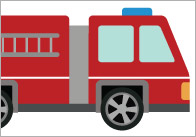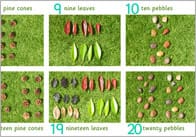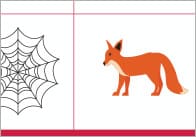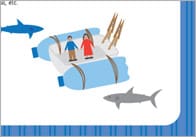The Power of Photographs in Supporting Children’s Learning
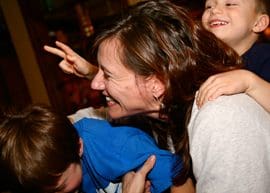
Photographs are a wonderfully versatile, open ended and cheap resource that can be used to support numerous aspects of children’s learning and development. They are particularly useful for supporting children’s personal, social and emotional development, their communication and language, their literacy and their understanding of the world. In fact, the Development Matters in the EYFS guidance refers to different uses of photographs no less than 17 times! I have seen many of these ideas working really well in early years settings and would like to share some of them here.
Resources you will need
Laminate photos of children and their families, their pets, their friends, their home or indeed anything or anyone that is special to them. Display them in an album, make them into a book using a hole punch and ribbon, hang them from a hoop using different lengths of string to make a mobile, arrange them in a wicker basket or display on a wall at child height. Photos can be labelled with names and books can include simple text – older children can help decide what to say and perhaps write their name. Once you have your resources, get using them!
1. Baby boxes
It is important to talk to babies about people who are special to them to help them make relationships and to feel emotionally secure. Cover an empty cardboard box (shoe box size) with paper and stick photos of the baby and family on each side of the box. Cover this with clear sticky plastic. Then encourage the baby to pick up the box, explore the photos, while you talk about them. Leave the box in the play area for babies to return to as they wish. Surfaces should be sanitised regularly and checked for safety.
EYFS Links:
– PSED: Making relationships
– PSED: Self-confidence and self-awareness
– UTW: People and communities
2. Nature baskets
Take a selection of photos of natural items at different stages of their natural cycle, such as flowers in bud, flowers in bloom, trees in winter, trees in summer, caterpillars, butterflies etc. Laminate them and store in a wicker basket with a magnifying glass. These can be used in many different ways to discuss, describe, observe patterns, examine, compare, sort, match….the possibilities are endless!
EYFS Links:
– CL: Understanding
– CL: Speaking
– UTW: The world
– Mathematics: Shape, space and measure
3. Story telling baskets
Provide a selection of photographs showing familiar people, places, activities and events – parents can contribute to this – and display them in a basket. These should be labelled with names. These can either be used independently by younger children to build their desire to explore, to concentrate and to think, or they can be used in an adult-guided activity with older children in small groups. The adult can begin the story with ‘Once upon a time there was a ……..’ and the first child finds a photo of a person. They describe and talk about this person and should be encouraged to ‘read’ the label. The next child selects a photo of a place and so the story begins to build. This can be adapted to meet the needs and interests of the children but, again, there are numerous learning opportunities available from a very simple resource.
EYFS Links:
– PSED: Making relationships
– PSED: Self-confidence and self-awareness
– CL: Listening and attention
– CL: Understanding
– CL: Speaking
– Literacy: Reading
– UTW: People and communities
– Characteristics of effective learning: playing and exploring, active learning, creating and thinking critically
4. My life in pictures – All about me book
Children love looking at photos of themselves so why not make a special book of photographs for each child that records their life in the setting in pictures. Each time children really enjoy an activity, an outing or achieve something new or special to them, take a photo, label it and laminate it. If it is a special piece of art work, photograph it before it goes home. Make the photos into a book using a hole punch and ribbon so that you can easily add to it. Let the children use the book in the setting and send it home with them to share with their families. It can be used to stimulate language and thinking, to make links with what has happened in the past, to help children feel good about themselves and is also a useful contribution to your own observation, assessment and planning for individual children.
EYFS Links:
– PSED: Self-confidence and self-awareness
– CL: Listening and attention
– CL: Understanding
– CL: Speaking
– UTW: People and communities
– Characteristics of effective learning: creating and thinking critically
– Observation, assessment and planning
– Partnerships with parents
Hilary is an independent early years consultant and freelance early years inspector. She has extensive experience as a practitioner, advisor and as an Ofsted inspector. She offers consultancy advice and support to the whole range of early years settings, including childminders, pre-schools and day nurseries. Hilary can be contacted at www.earlyyearssuccess.co.uk
Popular Teaching Resources
Stay Up To Date
Sign up for our newsletter and we’ll let you know when we create new early years resources.


